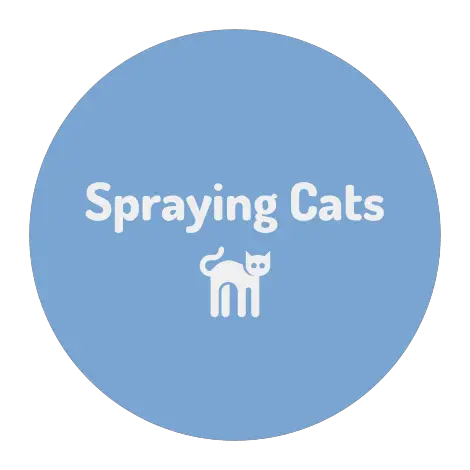Most cat owners spend their time trying to figure their cats out. Through the years of cat domestication, we have studied cat behavior to make it simpler. and we have now learned how cats communicate with us. However, that is quite simple to understand in theory. In reality, you will need to observe and learn how to speak with your cat. In this article, we are going to look at some of the most common cat sounds and also cat language translation.
Cats will meow and make other similar sounds when communicating with their kittens. Kittens, on the other hand, are born blind, and thus they depend on these sounds. However, when they grow up, cats will rarely use their vocalization with each other. In fact, research shows that cats exclusively reserve meowing and vocalization to communicate with us. Since we assume the responsibility to take care of them, we need to learn cat language translation. This way, we can be able to meet their needs and also strengthen our bonds.
Common Cat Language Translation
As we have previously mentioned, cats have different methods of communication which might be verbal or non-verbal. It is your responsibility, however, to translate what he is trying to tell you. In most cases, adult cats will only talk to you when they need something. Fortunately for you, we have mastered several distinct sounds that your cat can make while trying to talk to you. These may include:
Meowing
Meowing is the primary way in which cats communicate with us humans. In fact, since domestication, cats have been communicating with us in distinct sounds, which has also improved with time. Fortunately, research on cat behavior has also improved with scholars focusing on human-feline communication. You can now be able to translate these meows into what the cat really means. There are different types of meows that you can use to meet his needs. We are going to explore different types of meows as well as their meanings.
Short meow
A short meow is usually your cat just giving you a casual hello in the morning or when he sees you around. When you get home from work, your cat might meow multiple times which is also his way of greeting you. This will be accompanied by pacing and sometimes your cat may need you to pet him. This does not usually take long nor is it annoying.
Note that cat language translation has a lot to do with the bond you have with your kitty. Cats grow up while watching human behavior. He has seen you call or say hello to other people. If you do have a family, your cat has mastered the scent and the faces of each one of you. He also knows that you say good morning to each other. He will also adopt the habit of saying hello when he comes across each one of you.
Low-pitched meow
This is usually when your cat is complaining. Your cat is not happy with the environment or it could be any other element. It is up to you to rule out the reason why he is giving you this type of meow. Some cats will produce a low-pitched kind of meow when you forgot to feed them, or to clean up the litter box.
In addition, stress or nervousness is also a possible reason for your cat meowing like in this pitch. For this reason, it is important to check on your cat’s emotional status.
Mid-pitched meow
This is a demanding type of meow. Your cat needs something, and a mid-pitched meow usually gives him whatever it is. However, as we have previously mentioned, it is important to check it out like a cat’s meow to communicate with us. It could be because you have delayed feeding time by a few minutes. Cats are very expressive by the way. They do not shy away from expressing their feelings and needs to us.
And since we assume the responsibility of their parents, we have to listen and seek cat language translation when they talk to us. Well, a mid-pitched meow is usually a reminder for you to give him some food, open a door for him. He will give you this type of meow to tell you about his needs.
A long drawn out meow
When your cat gives you this type of meow, he is about to start nagging you. It is usually aimed at putting more emphasis on the need they have already communicated about. Perhaps your cat needs you to open a door for him as soon as possible. He will give you a long drawn-out meow that will have you obeying within no time.
If you do not get him what he needs, he may nag you even more. It is therefore important that you commit to a routine. This way, your cat will have his food ready. You may opt to leave the doors open if your cat likes to move around the house.
Loud, high-pitched meow
A loud and high-pitched type of meow means that all is not well with your cat. Well, it happens when you probably step on your cat. He will pounce and give you that loud meow which is more like a scream. It might also mean that your cat is startled or scared. For instance, if you have a dog who likes to bother the cat, this can be quite common in your household.
Should you even hear your cat producing this type of meow from the other room, you should check on him immediately. He is not fine.
Chattering and other unique sounds
Sometimes your cat will produce various unique sounds that are not exactly meowing. This is usually when their predatory instincts are aroused. It could happen when he is watching boards or any other animals or movement outside. He is excited because he wants to hunt, given that he is a hunter by nature.
Sometimes he may use chirps to get your attention. You should not always give him the attention he seeks. This might become a habitual thing that will create problems with excessive vocalization.
Hissing
Most cat owners have heard their cats hissing. This means all is not well with him. Cats usually hiss when they are feeling threatened by something. He will also have an arched back trying to make himself look bigger. In addition to this posture, your cat might expose his fangs and unsheathe his claws ready to attack. He might also flatten his ears which is usually a sign for a threatened cat.
If you adopted a feral kitty, you might witness this often. This is because they are not as social as domesticated cats are. They actually detest any form of contact and will rarely meow in the house. You should check on him and eliminate the threat he is facing.
Yowling
This is the longer version of the long drawn-out meow we talked about. In most cases, this is aimed at letting you know that your cat is not comfortable. Even though this kind of vocalization is reserved for other cats, ill cats have also been identified to produce this meow.
Also, if there are stray or lurking cats or dogs coming to your home, your cat can also be yowling. You will, however, have to pay attention to your cat in order to tell the reason why he is yowling. It is also important to take him to a vet for a check-up. This way, you can rule out any sicknesses leading to yowling.
If you have recently adopted a new kitty, you might consider spending some more time with him. You will need to make him comfortable in the new environment. Always leave him a few toys to play with before you leave the house. Yowling should cease when he gets used to the new home.
Purring
Cats will also purr for various reasons. Research shows that they purr when they are happy and content. Among the feline family, purring is actually a form of communication. Cat mothers will purr when trying to comfort their litter. The same way a cat may purr when you are petting him.
In addition, purring has been known to help the process of healing. For instance, the study showed that the vocal vibrations made when a cat purrs increase tissue generation. This means that in case your cat is injured, purring might catalyze the healing process.
Once again, you should also pay attention to your cat. This way, you can determine the reason why he might be purring.
Other unique cat sounds
Sometimes your cat might produce other sounds like chirping and chattering. This is usually as a result of his predatory instincts when he spots prey. For instance, if he is outside exploring, he might want to hunt. Remember that before domestication, cats were initially hunters. These instincts do not go away even when we domesticate cats.
In addition to the above, your cat might make snarls and growls when in a stressful situation. This can also be attributed to their territorial nature. If another cat comes into your home, your cat will snarl and express dominance.
Talk to your cat once you learn cat language translation
Learning cat language translation is amazing. However, you should also adopt a method to talk to your kitty. I mean, you do want a strong bond with him, right? Then you have to know how to communicate with your cat.
While they have mastered the art of communicating their needs with us, they do not care about what we have to say. Most don’t but this does not mean that you cannot talk to him. By training a few tricks to your cat, you can be able to talk with each other and hence strengthen your bond.
Now that we have already looked at some of the most common sounds a cat can make, we need to observe their body language as well. In particular, watch your cat’s eyes and ears when he is making these vocals. This way you can be able to get to know what he is feeling. We are going to outline a summary of some of the things to watch out for.
When you are petting your cat, it is likely that he has calm eyes. This is a sign of contentment and the trust that he has for you. Cats do not even blink when they know that they are in danger. In addition, if there is an element causing fear to your cat, your cat will also express it in his eyes. He will have wide-open eyes.
The ears and tail
These are also important parts that you will have to watch in order to determine what your cat is feeling. For instance, when he is scared or angry, he will have his ears flattened on the head. He might get into a defensive position that we mentioned earlier on. Therefore, you cannot ignore the position of your cat’s ears will give you an insight into his emotions. This will make it easier for you to manage your cat.
Conclusion
In order to ensure that your cat is doing well, you must learn cat language translation. This way, you can be aware of what your kitty is feeling. Gradually, you can introduce your cat to a few commands. This will have him obey your facial expression as well as your voice and hand gestures.
Cats are quite easy to train. However, you cannot be able to do this before you understand them. Pay attention to their body language and everyday behavior. It is how you learn what your cat likes and what he does not.
The challenge to talk to a cat lies in timing for when he will be most receptive. In a way, cats do not have a long attention span as dogs. Therefore, spare only a few minutes each day to train him any commands you wish. Our goal is to make sure that you have a strong bond with your cat by helping yours with cat language translation. Upon understanding your cat’s needs, you will also be able to meet them with urgency.
Lastly, vocalization is only but one method of cat communication. There are other factors you may want to consider when you are studying cat language translation like body and even behavior. Cats do talk to us but you are the one to figure it out. Owning and keeping a happy cat requires you to decipher cat language and enhance a good relationship.
[su_box title=”Affiliate Disclosure”]This website is supported by its readers. Please assume that all links are affiliate links. If you make a purchase from one of the links we will make a commission from Amazon. Thank you.[/su_box]




